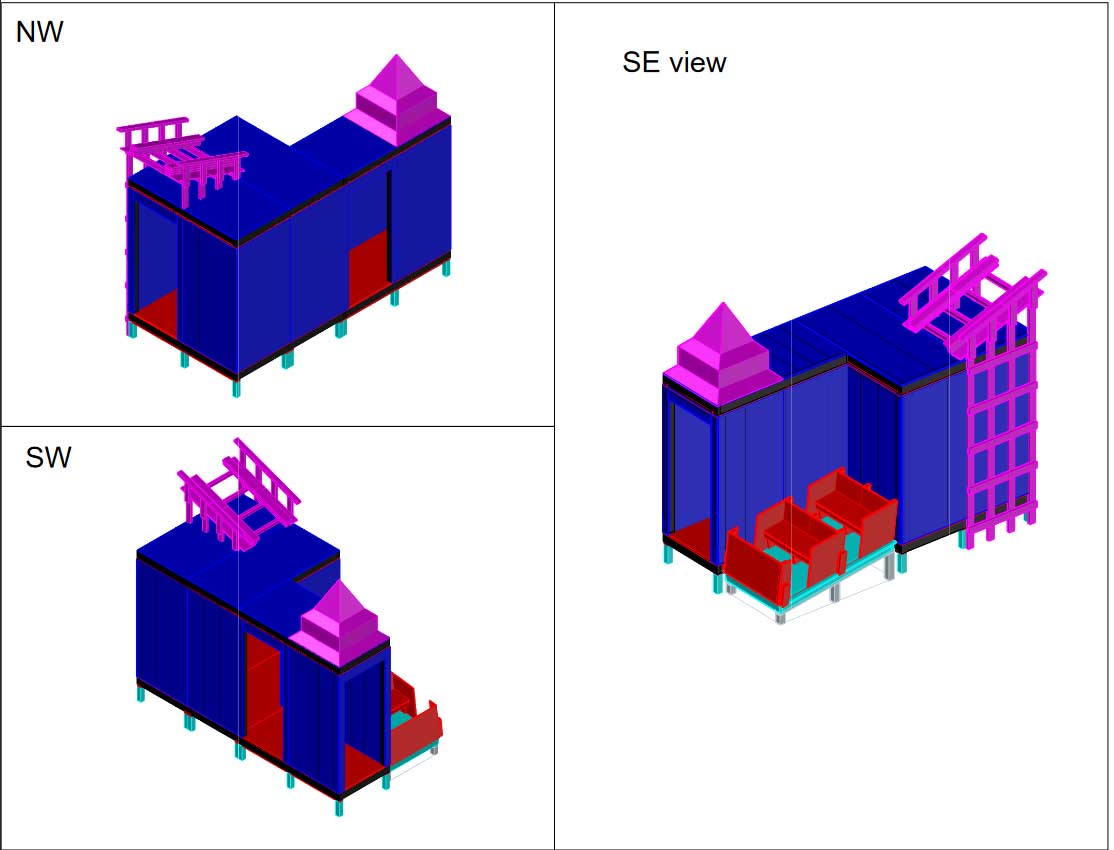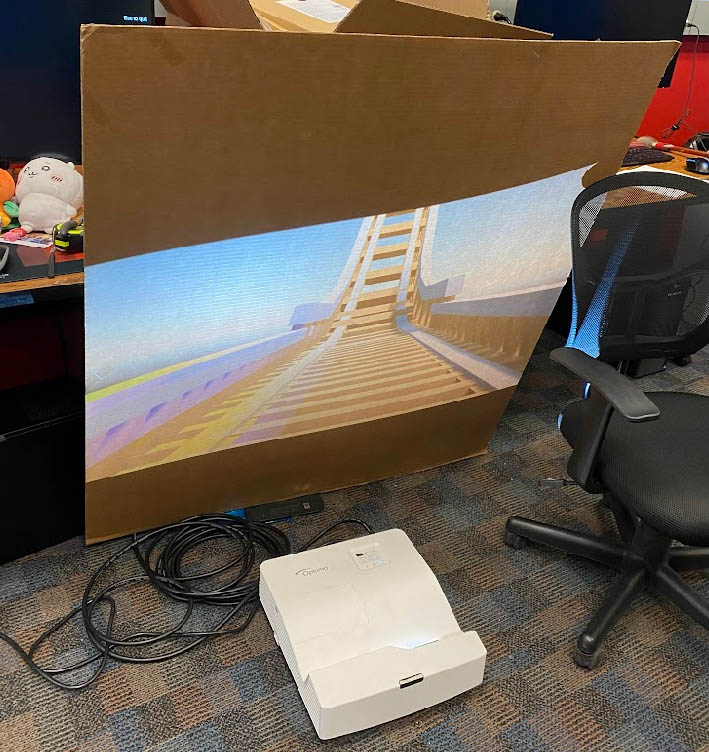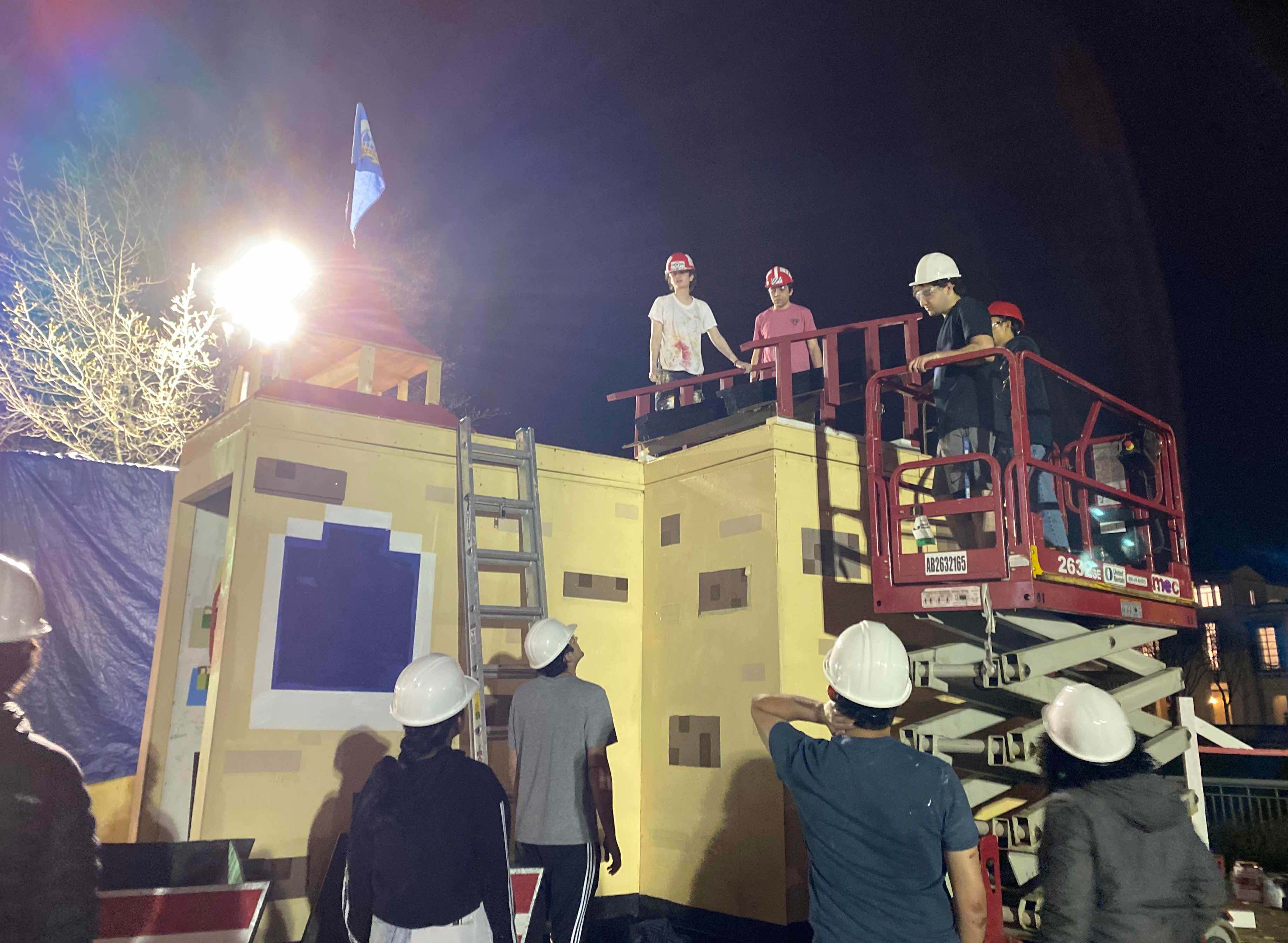ASCE&TPEG Booth (2024)
was a roller coaster themed motion simulator attraction built for Carngeie Mellon Spring Carnival.
Team
Angie Mendenhall: Game Chair
Samuel Chen: Structural Chair
Matthew Saenz: Motion Platform Chair
Louise Cutter: Paints Chair
Justin Peng: Electrical Chair
Experience Goals
> Be unique from other booths.
> Handle the throughput needs required by attractions on the midway.
> Create excitement and be entertaining.
Technology
> Motion Platform
> 3D Projection
> Unity Project Show Control
What Was The ASCE&TPEG Booth?
Every year, student organizations create “Booths,” wooden structures that house games for CMU’s Spring Carnival. The Theme Park Engineering Group teamed up with the American Society of Civil Engineers to create a booth of our own. We picked the theme “Roller Coaster Tycoon” for our attraction and created a roller coaster simulator attraction which used truck bellows to tilt the platform, to create the feeling of moving up or down the coaster track. Our visuals also had a 3D movie effect when wearing provided 3D glasses. Our attraction won awards for best in it's size category, People's Choice Award, and second place overall
Process

The Inspiration
We were inspired by the work of two ETC faculty members who created a motion floor for the ETC’s CAVE. We decided we would make our own motion floor, with a few more limitations. We would have to have a smaller footprint, we could only use one projector due to this, and we’d have to make it much cheaper than the original. We only had so much money as a student organization, even if we were working with another organization.

First Round Plans
The two civil engineers Booth Chairs created the original submission plans for review early in the Spring Semester, as they had to be approved by the Spring Carnival Committee. We knew with our motion platform we needed the show building to be a specific size, but the rest of the booth could be whatever we wanted. Be decided to use the back half of the booth, about 4 feet by 4 feet, as our show building. This had to be square to fit the motion platform as well as make sure our projection fit the whole wall. At this point, we did not have our projector yet and were not sure how what the throw distance was, but we wanted to be safe.

Painting and Preparation
Because we are only allowed to build our booths onsite a week before Spring Carnival, we wanted to paint as much as we could beforehand to avoid painting sheathing onsite. We started priming and painting our loose plywood sheets months before the event. The Booth team had signups so people could come in every week and I organized several TPEG events to have members come to where the flats were stored and help paint.
Game Demo
I was working on the content that the guests would see throughout the semester as well. We knew we wanted it to be interactive and have there be a lose and win state. We didn’t figure out how we wanted these win and lose states to be implemented until I had a conversation with two teammates, Justin and Taylor. We realized, in the spirit of Roller Coaster Tycoon, we wanted guests to be able to create coasters that are not physically possible or would crash the vehicle. With this, I began building a way for guests to pick what their track was and being able to build a coaster that would fly off the track. Here is a demo of the game, which ended up using the final implementation of the selecting track system.

3D Visuals
For getting to borrow an ultra-short throw projector, I was asked to make our visuals 3D. I got help from faculty at the ETC to achieve this look. We ended up rendering to two cameras in Unity and using Top/Bottom DP Link 3D. Here is a mock-up I created to test the projection size and 3D effect.

Build Week
The week before Spring Carnival, we worked late into the night getting our booth up. We had most of our booth completed in parts, it was a matter of putting them together and fixing what was broken. There were some decisions we had to make onsite, some things we had to repaint to make them match, or some ideas we had at the last minute that we knew would elevate our project. I helped put up frames, paint the mural, repaint the exterior walls, and move around heavy objects. It was a long week, but it was incredibly rewarding.
Testing the Game
Once our motion platform was installed, we could finally test the game and make sure the timing of the platform felt good. I had roughly estimated where we would want to have the platform move, but I didn’t realize the safety time between movements on the platform was three seconds. We decided to not make them shorter to ensure the air compressor would not lose pressure, so I had to adjust on the fly the experience of the track. The solution I came up with was that I used the natural falling of the platform back to resting state as the “downward” movement, rather than tilting the back bellow up to make it tilt forward. This allowed the track to have the proper safety time between different movements.
Final Booth
Here is a video of our final booth. This video includes exterior shots during Carnival, as well as a look inside the queue. Then, it is a recording of what is on the screen while guests create their roller coaster. There is then a video of the attraction, showing both the guests on the ride and what they see.